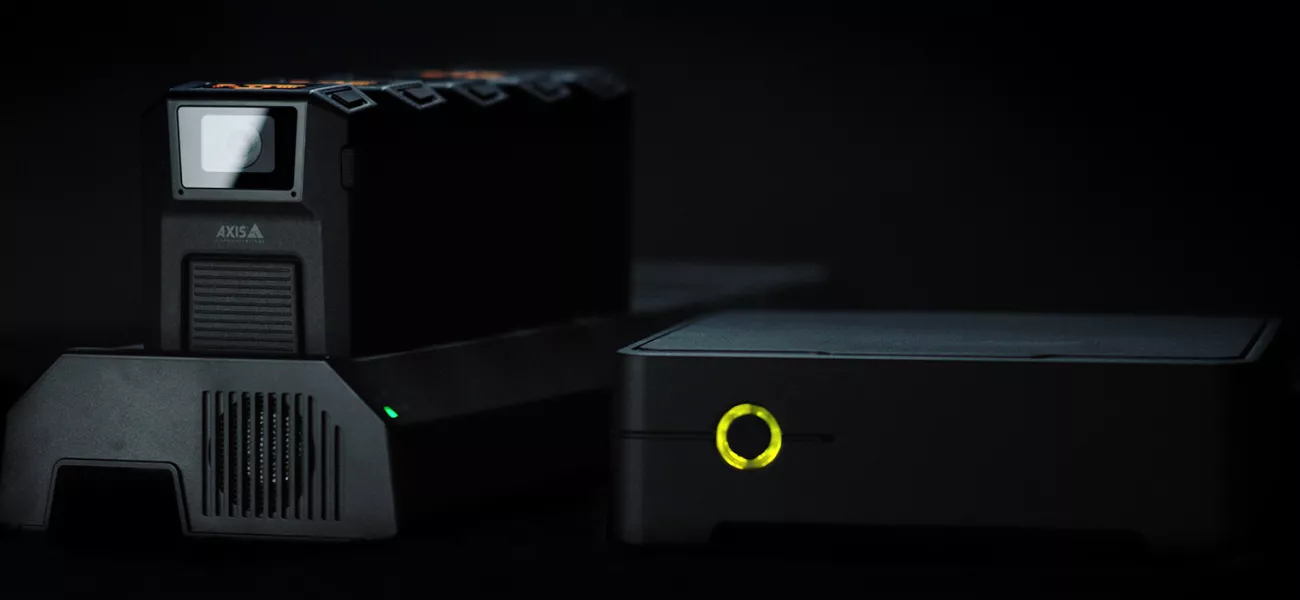
Body worn cameras have transformed the collection of evidence by law enforcement officers and security personnel. Where previously evidence based on one person’s perspective could be questioned, body worn cameras capture and prove what actually happened during an incident, with authenticity in the footage at its core.
Any video introduced as evidence in the courtroom will be scrutinized by lawyers involved in the case and any doubts about the video’s authenticity could be used to undermine a prosecution. It’s therefore vital that the authenticity of video captured can be accepted without question, and cannot be discredited. In this article we look at the authenticity and security features of the Axis body worn solution ensures footage can be trusted – from capture to courtroom.
The first step: authenticating video captured by body worn cameras
The growth in the use of body worn cameras by law enforcement and security personnel is clear to see, with cameras becoming the norm as part of officer uniforms. In collecting evidence of incidents, the video captured by body worn cameras has become invaluable in investigations and court cases. The importance of body worn camera video being completely and unarguable trusted as authentic is therefore essential. Establishing this from the point of capture is key.
The solution in the Axis body worn camera combines both hardware and software. As with many of the video surveillance cameras in the Axis portfolio, Axis body worn cameras include Axis Edge Vault, a security hardware component which protects the Axis device ID.
The inclusion of the Edge Vault hardware component in Axis body worn cameras has enabled signed video to be added to the latest Axis firmware. Signed video adds a cryptographic checksum into each video frame, which is then signed by a unique key in Axis Edge Vault. This allows video to be traced back to the Axis camera from where it originated, and it’s possible to verify that the footage hasn’t been tampered with since it left the camera.
A further enhancement comes through the use of signed firmware in Axis cameras, ensuring that only firmware released by Axis is ever uploaded and installed on its body worn cameras.
Leading with cybersecurity - ease of use an added benefit
The Axis body worn camera was designed with cybersecurity as a fundamental principle, both physically and digitally.
Reducing or completely removing the need for human intervention in the transfer of video from device to storage and beyond minimizes the risk of video being altered, either deliberately or by innocent mistake.
When the Axis body worn camera is docked after a full shift, the data is offloaded through the docking station to the system controller using a network connection encrypted with HTTPS (HTTP with TLS). The data is briefly stored in the system controller on its SSD storage device which is encrypted using AES256. The data is then transferred using HTTPS, to the content destination.
The security and integrity of the system controller is strengthened further by a FIPS 140-2 compliant TPM (trusted platform module) as well as the secure boot feature. This ensures that the device will only boot with authorized firmware.
Secure in both form and function
The physical design and components used to build the Axis body worn camera also add an additional layer of security.
The camera is designed to military specifications, ensuring that it is extremely robust and can withstand the harshest conditions. Security screws with tamper gel are used to hold the body worn camera together and ensure that the device is not only hard to break into, but so that is easy to tell if the device has been tampered with.
Even the SD card, where video is stored inside the device, is secured with AES256 bit encryption.
An integrated part of the Axis portfolio
The use of Axis Edge Vault, signed video, and signed firmware are just some examples of how the Axis body worn camera solution benefits from being an integrated part of the broader Axis surveillance camera portfolio.
This integration extends beyond our own technologies to our partners’ solutions, including video management systems (VMS) and evidence management systems (EMS). End-to-end verified solutions are inherently more secure that those from multiple vendors, where the links between components and software can be the weak points open to exploitation.
And this, ultimately, brings us back to the core objective: ensuring that the evidence recorded by body worn cameras can be trusted, from capture to courtroom.